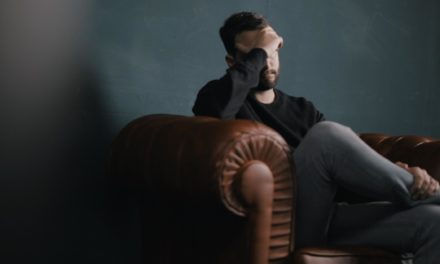Benzodiazepines, it’s a drug that’s a mouthful to say and seemingly on everybody’s lips. It recently made headlines as part of a sports scandal, concerns over increased instances of benzo-laced drugs and the spike of benzo-related overdose deaths, and an epidemic within a pandemic as rates of mental illness exploded due to COVID-19. This drug class includes several of the most widely prescribed drugs in the country, so you’re just as likely to have heard someone mention a benzo by name.
Although Xanax (alprazolam), Valium (diazepam), or Klonopin (clonazepam) might sound familiar, you might find yourself surprised at how powerful these little pills are and the extent of conditions they can help with. Yes, they are most commonly used (and remarkably effective) at treating anxiety, but that’s not all they do. Keep reading to learn what benzodiazepines are used to treat and how they work.
The Benzodiazepine Drug Class: What Is It?
First, let’s start with the basics. Benzodiazepines are a class of central nervous system depressants that produce calming or sedative effects. Powerful and fast-acting, they cause effects similar to that of being drunk. Side effects include dizziness, drowsiness, confusion, and weakness. Since their introduction in the 1950s, over 2,000 types of benzodiazepines have been created. Currently, just over a dozen are still in use today.
Benzos were initially created as a safer and less addictive substitute for barbiturates, which were used for nearly identical purposes. Despite this intention, benzos still carry a high risk of causing dependence or addiction even when taken exactly as prescribed (this risk is even higher in individuals who have a history of substance abuse). This has led to these prescription sedatives being a controlled schedule IV substance by the DEA, which also includes Ambien and Tramadol (neither of which are benzos).
How Do Benzodiazepines Work?
Benzos work by targeting a neurotransmitter called gamma-aminobutyric acid or GABA. GABA acts as a red light for the central nervous system by reducing neural responsiveness and telling neurons not to fire. This effectively slows down the messaging between the brain and spinal cord and is why GABA has a calming effect.
Normally, this neurotransmitter is naturally occurring and signals your body to return to normal after exertion or excitement. A shortage of GABA, however, will lead to neurons firing too often and prevent the body from coming down from a physiological stature of heightened activity. These shortages have been shown to have a direct correlation with things like anxiety and panic disorders, seizure disorders, and Parkinson’s syndrome, and is why benzos are highly effective in their purpose.
What Are Benzodiazepines Used For?
Benzos are used to treat a wide variety of conditions. Anxiety and insomnia are the most widely known, but they can also be used to treat alcohol withdrawal symptoms, seizures, and serve as anesthesia. In addition to these FDA-approved indications, benzodiazepines also have off-label use–effectiveness in treating conditions that it wasn’t officially approved for. These can include tic disorders, bipolar disorder, restless leg syndrome, and other psychological issues.
Why are some benzos used for certain conditions while others aren’t? Although the dozen or so that are still used in modern medicine all have a similar mechanism of action and many of them can be used interchangeably there are key differences between them. Benzos are primarily distinguished by their duration; whether they are short-acting, intermediate-acting, or long-acting. This along with how quickly the effects are felt (onset of action) plays a significant role in determining what ailment a benzo is used to treat.
For example, intermediate and long-acting benzos are used to treat anxiety disorders while those that are short-acting are primarily used for short-term treatment of insomnia. Valium and Tranxene have a very fast onset making them highly effective in combating the effects of unexpected anxiety or panic attack.
Short-acting benzodiazepines (Duration between 3-8 hours):
Midazolam (Versed)
Triazolam (Halcion)
Estazolam (Prosom)
Intermediate-acting benzodiazepines (Duration between 11-20 hours)
Alprazolam (Xanax)
Clobazam (Onfi)
Clonazepam (Klonopin)
Lorazepam (Ativan)
Nitrazepam (Mogadon)
Oxazepam (Serax)
Temazepam (Restoril)
Long-acting Benzodiazepines (Duration between 1-3 days):
Chlordiazepoxide (Librium)
Clorazepate (Tranxene)
Diazepam (Valium)
Flurazepam (Dalmane)
Quazepam (Doral)
Which Benzos Are Used For What:
- Panic attacks or anxiety attacks: Ativan, Librium, Tranxene, Valium, Versed, Xanax
- Insomnia: Dalmane, Doral, Estazolam, Halcion, Restoril
- Seizures: Ativan, Klonopin, Onfi, Tranxene, Valium
- Anesthesia: Ativan, Valium, Versed
- Muscle relaxant: Valium
- Alcohol Withdrawal: Librium
One thing that is crucial to note is that all benzodiazepines are almost always prescribed for short-term use. Long-term use can cause lasting cognitive impairment along with acute symptoms of increased drowsiness, lowered reaction time, and loss in coordination in memory. Addiction, the benzodiazepines can become habit-forming in as little as a few days. It is never recommended to use a drug without a prescription (and never a good idea to buy it illicitly off the black market), however, benzos pose a particular risk in that they can quickly interfere with a person’s ability to function in their daily life.
Sources:
https://wa.kaiserpermanente.org/static/pdf/public/guidelines/benzo-zdrug.pdf



